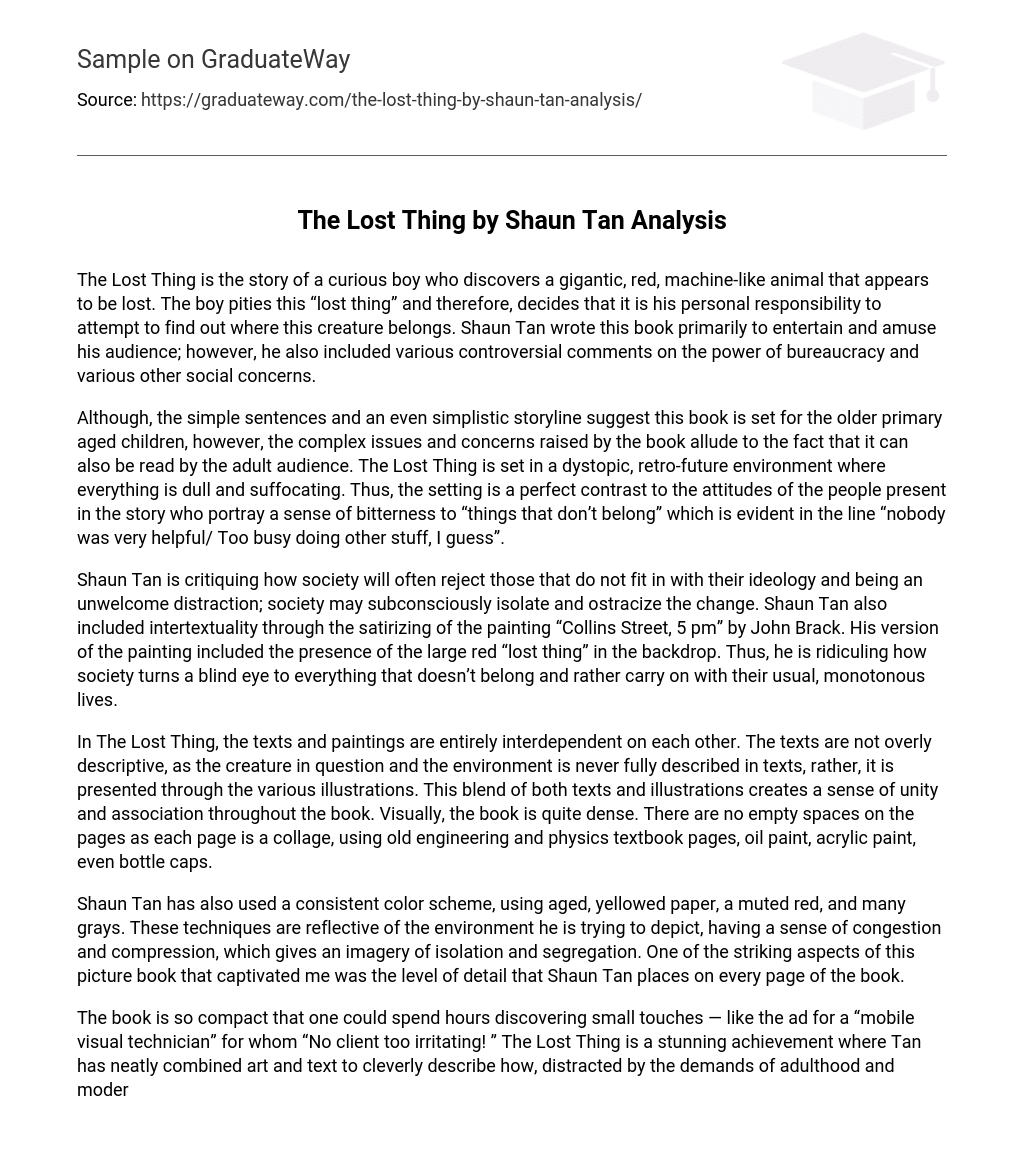The Lost Thing is the story of a curious boy who discovers a gigantic, red, machine-like animal that appears to be lost. The boy pities this “lost thing” and therefore, decides that it is his personal responsibility to attempt to find out where this creature belongs. Shaun Tan wrote this book primarily to entertain and amuse his audience; however, he also included various controversial comments on the power of bureaucracy and various other social concerns.
Although, the simple sentences and an even simplistic storyline suggest this book is set for the older primary aged children, however, the complex issues and concerns raised by the book allude to the fact that it can also be read by the adult audience. The Lost Thing is set in a dystopic, retro-future environment where everything is dull and suffocating. Thus, the setting is a perfect contrast to the attitudes of the people present in the story who portray a sense of bitterness to “things that don’t belong” which is evident in the line “nobody was very helpful/ Too busy doing other stuff, I guess”.
Shaun Tan is critiquing how society will often reject those that do not fit in with their ideology and being an unwelcome distraction; society may subconsciously isolate and ostracize the change. Shaun Tan also included intertextuality through the satirizing of the painting “Collins Street, 5 pm” by John Brack. His version of the painting included the presence of the large red “lost thing” in the backdrop. Thus, he is ridiculing how society turns a blind eye to everything that doesn’t belong and rather carry on with their usual, monotonous lives.
In The Lost Thing, the texts and paintings are entirely interdependent on each other. The texts are not overly descriptive, as the creature in question and the environment is never fully described in texts, rather, it is presented through the various illustrations. This blend of both texts and illustrations creates a sense of unity and association throughout the book. Visually, the book is quite dense. There are no empty spaces on the pages as each page is a collage, using old engineering and physics textbook pages, oil paint, acrylic paint, even bottle caps.
Shaun Tan has also used a consistent color scheme, using aged, yellowed paper, a muted red, and many grays. These techniques are reflective of the environment he is trying to depict, having a sense of congestion and compression, which gives an imagery of isolation and segregation. One of the striking aspects of this picture book that captivated me was the level of detail that Shaun Tan places on every page of the book.
The book is so compact that one could spend hours discovering small touches — like the ad for a “mobile visual technician” for whom “No client too irritating! ” The Lost Thing is a stunning achievement where Tan has neatly combined art and text to cleverly describe how, distracted by the demands of adulthood and modern life, we lose the ability to appreciate the magic around us as we age. Ultimately, “The Lost Thing” explores the concepts of belonging and alienation that is exemplified within a bureaucratic society.





